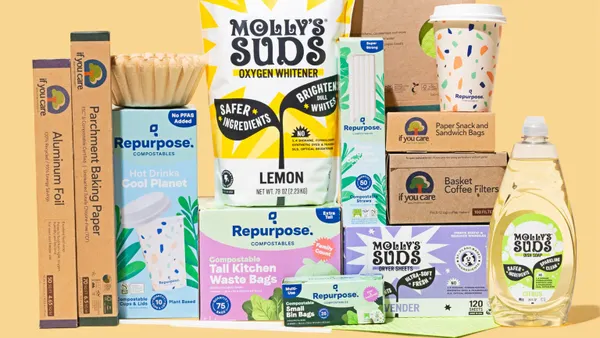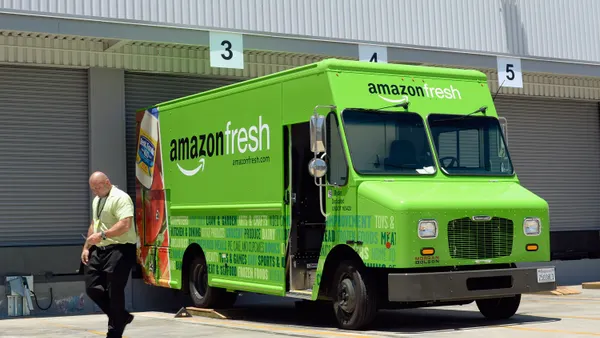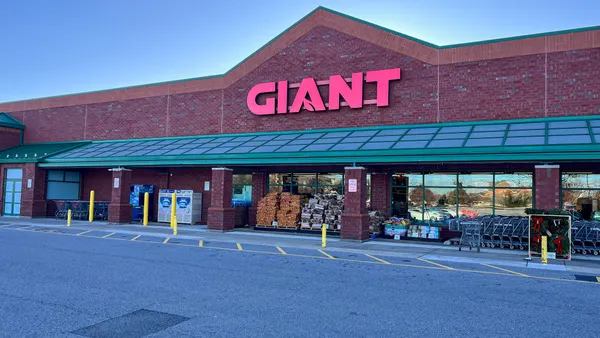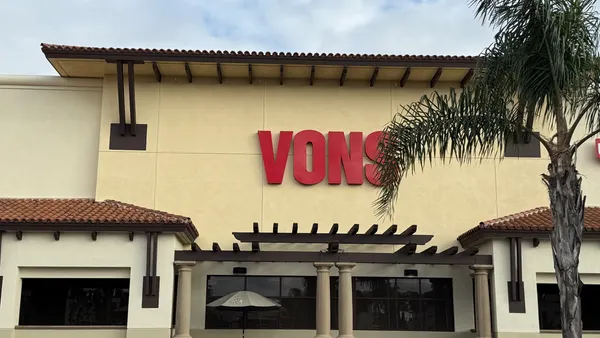Dive Brief:
- Ninety percent of grocery retailers consider reducing food waste to be key to meeting their corporate sustainability targets, but the industry is being held back by a fragmented approach to stemming the amount of food that goes unsold, according to survey results released Wednesday by Coresight Research.
- More than half of grocery retailers (51%) that participated in the research said they do not have the technology they need to prioritize food waste-reduction, and an even greater proportion (52%) said they lack management support for doing so.
- Grocers are divided in how they define and deal with food waste even as many retailers say they plan to improve their management of the issue during the next few years.
Dive Insight:
While Coresight’s finding that a substantial portion of the food retailers it surveyed do not have tools that could help them cut back on food waste may be a cautionary signal, the research also suggests the grocery industry is taking active steps to mitigate that problem.
Eighty-four percent of respondents to the survey, which Coresight conducted last October and drew input from 219 grocers based in North America, plan during the next two years to invest in technology that could help them reduce the amount of food they aren’t able to sell or otherwise have to write off.
However, retailers differ in how they interpret the concept of food waste, with the largest share (42%) defining it as items that are unsold and another 28% using the term to refer to food sent to a landfill. The rest consider food waste to be products that are lost to shrink or cannot be sold at full price.
Respondents to the survey indicated that responsibility for managing food waste encompasses multiple departments, with store operations at the top of the list, followed by procurement/strategic sourcing and supply chain. Thirty-eight percent of respondents said individual stores take on the most responsibility for the cost of food waste, with just under a quarter pointing to the corporate office.
Participants also said they find alternative uses for the vast majority of food they don’t sell, with only about 15% of those items winding up in landfills. Nearly a quarter (23.1%) of unsold food goes to donations and just under 11% is used to make prepared food.
Respondents indicated that they see a number of areas where they can reduce shrink from unsold food. Topping the list is the use of discounts to help sell food before it expires. Retailers also noted that they see forecasting demand better and stepping up their ability to track date codes or freshness as areas where they can make improvements.
Interviews Coresight conducted with retailers revealed that inaccurate demand forecasting plays an especially large role in generating wasted food. Prepared foods are a significant source of food waste, with overproduction and overordering each accounting for more than a third of those items that retailers throw away, the researchers found.
Grocers are limited in their ability to control food waste on their own. Consumers and businesses collectively throw away between 25% and 40% of food that is grown, processed and transported in the United States annually, according to the Food Industry Association.












